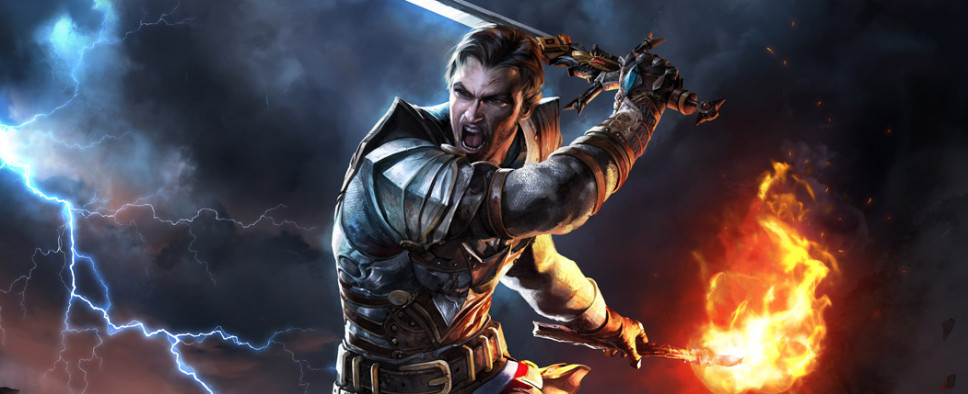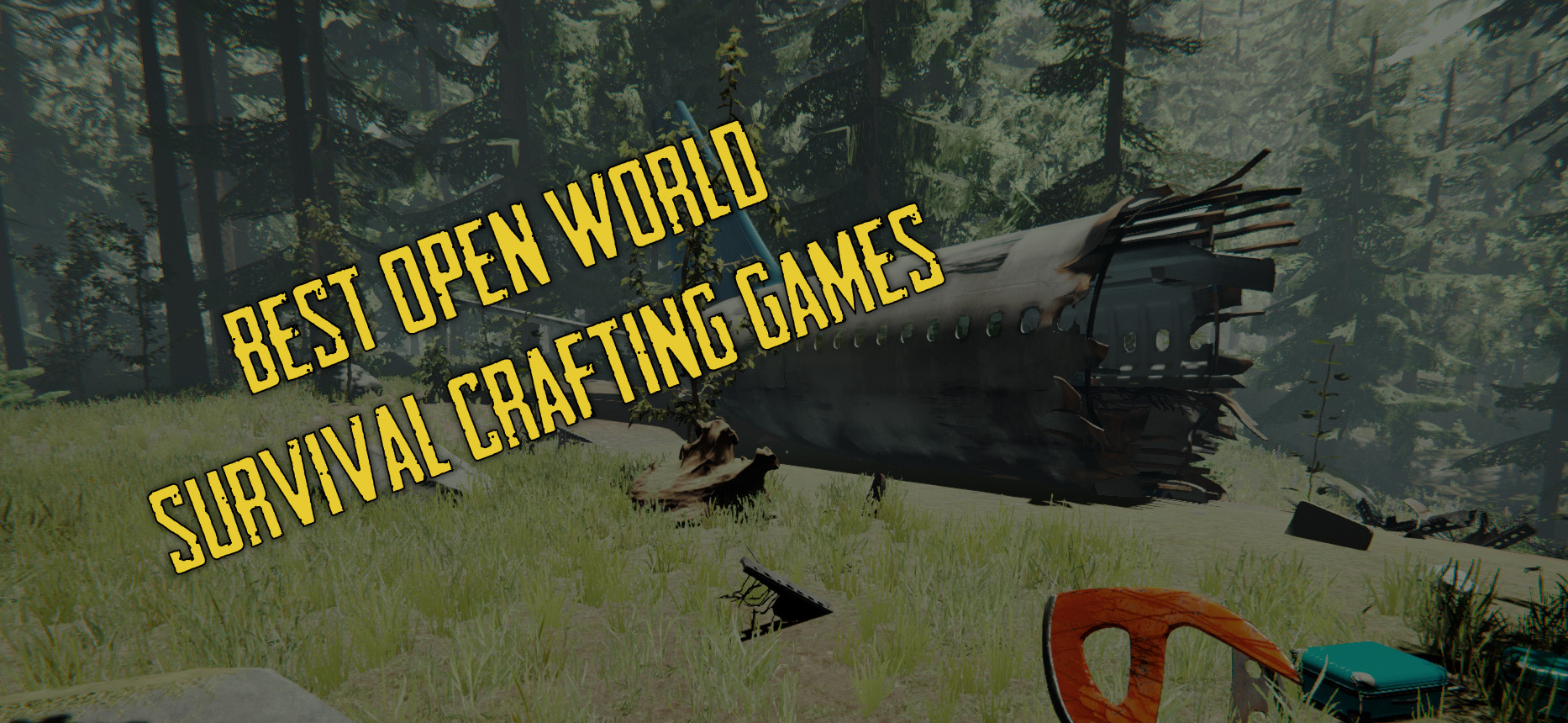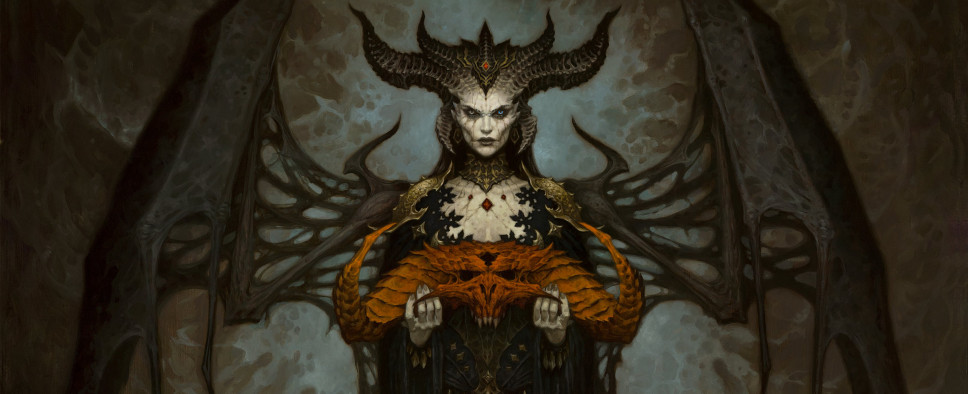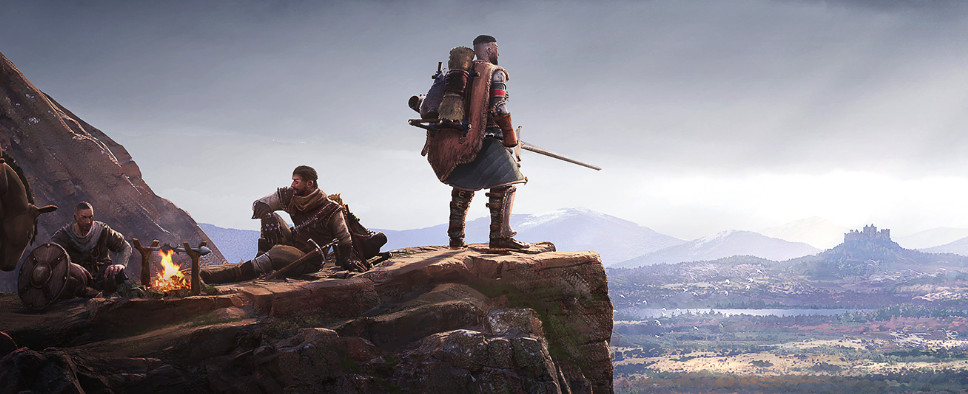Introduction
Risen 3: Titan Lords is the third title in the exploration-focused action-RPG series developed by Piranha Bytes, a studio most well known for the Gothic series, particularly the first two titles. The original Risen was a return to the roots of Gothic and Gothic II after the ambitious Gothic 3 fell short of expectations. Risen 2: Dark Waters was an attempt to broaden the audience and pleased very few fans and critics. Clearly Deep Silver and Piranha Bytes must have noticed that, because pretty much all the marketing material available for Risen 3 (which, admittedly, isn’t plentiful) focuses on the “return to roots” angle, the idea that Risen 3 is the return of the Piranha Bytes we all know and love.
After all, factions and crystal magic have returned, there’s a new protagonist without an eyepatch, and all the environments shown before release had a more traditional fantasy vibe than even the original Risen. However, as anyone who actually checked Deep Silver’s streams or any of the German Let’s Play videos available pre-release already knows, this isn’t actually true at all. Risen 3: Titan Lords is an iterative sequel that keeps many of the trappings of the setting, mechanics, and assets of its predecessor while trying to smooth its rough edges and (slightly) open its oppressive confines. Was this enough to make Risen 3 a good game? I’m afraid the answer to that question will take more than one paragraph.
In the interests of full disclosure I’ll mention that this review was based on a press copy that was provided by Deep Silver, which also included all the pre-order DLC: Adventure Garb, Fog Island and Uprising of the Little Guys.
Story, Setting and Quest Design
Risen 3’s story is based on a fairly simple personal premise. The new protagonist, a pirate with the same exact sarcastic personality as the original castaway of Risen (and the Nameless Hero of Gothic), has his soul stolen by a Shadow Lord while trying to dig up some fabled treasure on a tropical coast. This event has drastic consequences on him, though not quite as drastic as you might imagine. After being buried by his sister Patty (a returning character who now for some reason wears a cheap “sexy pirate” Halloween costume), the hero is resurrected by Bones, another familiar face from Risen 2. After coming to grips with his condition, our hero embarks on a quest to reacquire his soul before turning into a minion of the Underworld, ready to do the bidding of a mysterious master who seems for all purposes intent on conquering the world.
While the premise might not be extremely original, I’m convinced it had potential, but Piranha Bytes’ crude storytelling squanders it. While occasionally referenced in dialogue, the protagonist’s condition seems to come into play far less often than it should, and in the worst possible ways. Sleeping in a bed has a good chance of catapulting you into barely interactive nightmare sequences, which usually include some minimal exploration through a rather bland version of the afterlife (everything is white and under a thick layer of bloom). They also offer the opportunity to talk to cryptic spirit versions of deceased characters from the previous two titles. While I admire Piranha Bytes’ ability to create settings that feel real and lived-in, their dialogue really only shines when sarcasm is involved and otherwise tends to be pretty bad. These sequences are a painful reminder of that: Only a few of the spirits have anything insightful to say, and even fewer have memorable personalities, making it difficult to see these encounters as the blasts from the past the studio’s writers no doubt considered them to be.
The protagonist’s condition also provides justification for a new gameplay addition: A morality system. The game now judges your actions and subtracts or adds soul points, which determine your overall alignment, on a scale from 0 (a despicable, demonic individual) to 100 (a full-blown, good-hearted human being). Wait, did I say actions? Pardon me, I meant to say conversation responses, as your actual actions in the game have absolutely zero effect on your alignment. To give you an idea: I was asked by a native to find a token of friendship for her. A pirate gave me a tip about a golden bowl in one of his crewmates’ storage that was fit for the task. Mentioning to him that I’d get it legitimately earned me a soul point, stealing it had no effect on my alignment, and finally being honest with the native about having stolen it had me lose a soul point. Another ridiculous occurrence happened when the protagonist spontaneously decided to extort some money from a person I was trying to save, without any of the dialogue options hinting that might happen. The punch line? Despite doing that, I earned a soul point. Go figure.
That said, despite a squandered promise and crude dialogue, I enjoyed Risen 3’s main quest, and that’s largely because Piranha Bytes seemed to better understand its strengths this time around, and crafted a globe-trotting adventure that strongly encourages exploration. Despite not abandoning Risen 2’s piracy theme (which proved fairly controversial with the community, but I personally really enjoyed), the game offers more varied and memorable environments in addition to some recycled and slightly retooled locations from Risen 2. The bulk of the game takes place on three islands: Kila, inhabited by some pirates and by a tribe of natives who have been abandoned by their mysterious “Oracle”; Taranis, an island with curious climatic conditions on which the mages are conducting experiments under protection of the Guardians; and Calador, the home of the ancient Demon Hunters, called to arms by the druid Eldric (another returning face, this time from the original Risen), who re-lit the ancient green fire beacons.
The three islands share some structural similarities (all three house a faction with headquarters in the hinterlands of the island, all three have a community of common people in the vicinity of the beach on which you land, and finally, all three have zones that can’t be explored until you (unlock) them in the main quest). However, despite that, they feel very distinct. Each of the islands has its own visual theme and well developed history, which influence all the interactions that take place on it, from small-time delivery jobs to quest arcs that tie into the main quest. The best part is that you can visit all of them from the beginning of the game, as the protagonist gets access to a sloop immediately after the heavily scripted, clumsy cinematic tutorial.
However, the actual game and main quest line is far less constricting and reliant on scripts. I spent my first 15-20 hours of the game just jumping from island to island, doing quests and accomplishing objectives while trying to decide which faction I would join. I was pleasantly surprised to discover that I could already solve plenty of quests that were tied to the main quest simply by taking the initiative. In some ways, Risen 3 really feels like the most open title in the series: Where Risen 1 had a really linear ending chapter, and Risen 2 took far too long to open up, Piranha Bytes’ third game finally gets it right.
I already mentioned that the game reintroduces factions. For the most part, it’s the same three faction setup Piranha Bytes used in most of its titles: At a certain point of the story you’re asked to join one of three factions, and depending on which you choose, new quests, abilities and equipment are unlocked, and even the character’s appearance is altered slightly. For my full playthrough I joined the Demon Hunters, which meant my character gained a short-range teleport ability instead of the normal dodge and could learn rune magic from the teachers around the Citadel. Just as you might expect from a Piranha Bytes’ game, it’s possible to rise through the factions’ ranks by completing quests, and with each rank comes a more powerful tier of faction armor. Unfortunately, despite all that, I can’t help but be slightly disappointed with the implementation of factions in the game. They feel artificial, and not as well-integrated as they were in the past. The main quest requires you to join one faction but doesn’t really explain why it’s necessary, and there is little to no interplay between them. While in the original Risen choosing a faction felt like a real commitment, in Risen 3 it feels more like a flavor choice, and has very little effect on the main quest.
In general, consequences of your choices are pretty rare in the game. At the beginning of the game I was given the chance to betray one of the possible companions, and chose not to because I was trying to play a good guy. Much to my disappointment, I later discovered the companion was necessary for some plot sequences and would have survived anyway. Minor conundrums have multiple solutions, as usual, and your alignment can convince some companions to leave you, but that’s really all there is to it. That said, quest design tends to be pretty decent, with a mixture of simple and more elaborate quests, which often offer multiple options. Sometimes, simply exploring the environments can lead to a memorable situation and a new quest, whether it’s a particularly stupid pirate deciding to tag along and bother you constantly with tales of a hidden temple, or what appears to be a skeleton asking for your help after a fight. There are a lot of quests in the game. Frankly, there are too many. I enjoyed most opportunities to explore I was given, even if they came in the form of a fetch quest, but by the end of the game I had grown a bit tired of the familiar rhythm that had been established, and ended up skipping most side content and just going for the finish line.
Finally, speaking of exploration, I should note that Piranha Bytes attempted to open up and provide incentives for exploration, unlike Risen 2. While in Dark Waters you would automatically unlock fast travel points which effectively discouraged exploration, in Risen 3 you have to actually find and activate the teleporters before they can serve the same function, provided you have at least one teleporting stone. It’s a small change but it’s better than Risen 2’s system. However, I would have liked to see more done in this direction, for example tying the use of the teleporters to a resource, or requiring the character to reach one to be able to be able to use the teleport system. As it stands, you can simply open the map at any point and automatically teleport to one. The game also has many more climbable surfaces than its predecessor, often placed in less obvious spots, lending the areas more verticality. The action of climbing is simply performed by pressing the jump button near one of them, without any prompt informing you of the possibility. It’s also now possible to swim, for the first time in the series, though the implementation leaves much to be desired. The protagonist can’t dive underwater, and swimming too far in certain directions will teleport you back after a loading screen, without any explanation given. I understand Piranha Bytes is working under tight budget constraints, but is it really too much to ask for the character to say something like “I’m getting too far away, better go back” or something along those lines? These artificial barriers are especially notable in the island of Calador: a section of the island is blocked by a river of lava, and can only be reached by completing a specific stage of the main quest, but it should be theoretically possible to just swim near the coast to get there. It wouldn’t have been difficult to fix that: A simple visual effect near that part of the coast which indicated that the water was boiling and couldn’t be crossed would have been enough. For a developer that puts as much of a premium on exploration and freedom as Piranha Bytes, this kind of lazy design is inexcusable.
Character Progression and Gear
Risen 3 utilizes the same character system as Risen 2, with some small tweaks. Just like its predecessor, in Risen 3 you earn Glory by completing quests or killing enemies, which you can then use to raise one of 8 attributes: Melee, Ranged, Cunning, Influence, Toughness, Dexterity, Magic and Spirit.
Each of these attributes determines your base proficiency in the secondary attributes that get used while actually playing the game: Melee determines Piercing Weapons, Slashing Weapons and Swords; Ranged influences Shotguns, Muskets and Critical Hit; Cunning is used for Pistol, Crossbows, Daggers and Critical Hit; Influence for Silver Tongue and Intimidate; Toughness increases Bladeproof, Bulletproof and Resist Magic; Dexterity is used for Pickpocketing and Lock Picking; Magic for Voodoo Magic, Crystal Magic and Rune Magic; and finally, Spirit influences Astral Vision and Alchemy. Most of those attributes are fairly self-explanatory, with perhaps the exception of Astral Vision, Risen 3’s completely unnecessary version of the”detective mode” mechanics that have become increasingly common in the last few years.
The third piece of the puzzle are skills, which can be learned from trainers, provided you have enough gold and meet the other requirements. These range from boring flat bonuses to your secondary attributes, to actual game-changers, like the ability to craft certain item types, parry enemy attacks, or add an extra move to your melee combos. It’s a system that works fairly decently, but also loses the coarse feeling of progression typical of the studio’s earlier works, up to feeling unsubstantial at certain points. By the end of the game I knew fairly well how and why my skill choices affected my character, but I wasn’t too sure to what degree my attributes did, given the game doesn’t provide anything other than a vague description for their effects. Here and there I also found a few skills with weird requirements that appear intuitive at first but don’t actually make much sense mechanically. For example, some melee skills required me to have a high Dexterity, which makes sense until you remember that it’s actually the attribute that influences the thieving skills, and has nothing to do with combat.
Similar inconsistencies also present themselves when gear is concerned. Armor progression feels far more substantial, with major, meaningful upgrades reserved for faction armors and a few hidden pieces. Amulets, rings and earrings are designed exactly like in Risen 2, and, as they offer an assortment of minor bonuses to your attributes, lead to the sort of equipment-swapping nonsense that Piranha Bytes used to avoid. In contrast, the weapon progression is well done, with upgrades happening often enough while still feeling substantial. The best weapons are locked behind side content and crafting, though a few of the rarest items, which you can find broken in pieces throughout the world and need to reforge, feel a bit underpowered. As for the actual balance between weapon types, it’s better than Risen 2, but still hardly perfect. I’ve mostly played the game as a melee character that occasionally used pistols and rune magic, but I’ve had the chance to dabble a bit with the ranged main weapons, and they still felt too powerful. I suppose their trade-off is in terms of playability, as they’re simply boring to use.
Combat and Difficulty
While combat in Risen 3 shares the same basic functionality with Risen 2, it’s also been significantly tweaked in an attempt to provide a more satisfying experience. Just like in Risen 2, you can equip two weapon types: A primary weapon, and a secondary, situational weapon. Primary choices include an assortment of melee weapons (all of which, unfortunately, use the same set of combat moves), muskets and shotguns, and even a crystal glove that can be equipped with different types of offensive magic. Meanwhile, secondary weapons come in the form of pistols, crossbows, daggers, and the occasional bomb. The more outlandish “dirty tricks” from Risen 2, like the disturbing parrot and the coconut, have been removed. On top of that, all characters have a dodge roll move to get out of the way of danger.
While secondary weapons as well as muskets and shotguns work more or less like they did in Risen 2, melee feels different. Aside from the normal light melee combo, which now let you close in distance with a target in a fairly fast way (think of The Witcher 2: Assassins of Kings or the Batman: Arkham games), you can hold the attack button to do more damage and break enemies out of their parries, and parry humanoid and monster enemies yourself, though some attacks are still unblockable. You’re supposed to analyze the enemy patterns and decide what strategy is the best, though in hindsight, rolling out of danger and striking back with fast attacks is almost always a surefire strategy. Crystal glove magic feels like a hybrid of muskets and melee: Normal attacks perform small short-range combos, while using the right button lets you aim with a reticle instead of blocking. Rune magic and Voodoo are implemented in a more classic way: you can either use consumables (scrolls, runes, and dolls) or learn spells and place them in your hotbar. Rather than using mana or a similar resource pool, Risen 3 uses cooldowns for spellcasting: A global, short one between each spell cast, and a longer one for repeated uses of the same spell.
Overall, Risen 3 offers a fairly good variety in terms of killing tools and is less stingy when it comes to giving players a chance to try them: You start the game with a melee weapon and a pistol, and can find spell scrolls and even muskets fairly early on. Pretty much every weapon type is available from the beginning with the exception of the Guardians’ crystal gloves, which are only offered to players who join that faction. This approach was also applied to world design, with enemies that tend to be far tamer and less dangerous than they have ever been in a Piranha Bytes games, giving more room to explore and experiment for starting characters.
To tell you the truth, I’m disappointed. The game’s enemy and encounter design lead to a difficulty curve which starts easy and ends up even easier. There are very few mini-bosses scattered throughout the islands, and there were few places where exploring made me feel endangered. Furthermore, the enemies simply aren’t all that different in terms of patterns and resistances, with the AI of humanoids in particular leaving much to be desired. The only exceptions that come to mind, at least in the early game, are Shadow Guardians and Shadow Lords. The first are brutish, fast humanoid opponents that can easily break your guard and snap into attacks unexpectedly. The seconds are mini-bosses that can teleport and have both ranged and melee attacks, usually accompanied by weaker minions.
Speaking of crowds and encounter design, I also have to mention a few problems I had with the combat system. There still is no lock-on option to focus on a single target. As such, while fighting in a crowd, I’d often end up attacking the wrong enemy and wasting my time. Furthermore, the increased freedom of movement in combat is often severely limited by the map design, which seems to be made for a different game with more static engagements. In practice, if you happen to get too far while maneuvering, you might find yourself drawing the attention of even more enemies. It might add to the danger (though not very much), but also looks goofy and unintended. A better way to raise the stakes would have just been to make fewer encounters, but also design them to be tougher and requiring a more tactical approach.
The bosses fare better than they usually have in the series, though I would hesitate to actually call them good. Two of them follow the same simple design pattern of minions defending a damage sponge that can heal itself but isn’t too dangerous in melee, while the third one is your typical Piranha Bytes gimmicky boss. I enjoyed the first two far more than the latter, but I can say there’s still plenty of room for improvement in this aspect of game design for the series. That’s assuming the series actually needs boss fights, something I don’t agree with.
Finally, I should mention that the companion mechanics work in the exact same way they did in Risen 2. Curiously, their AI seems worse this time around and often has no idea how to react to the enemy’s actions. Maybe it’s deliberately stunted to be less of a crutch for players?
Minigames and Assorted Stuff
Many of the same minigames and odd design and interface decisions from Risen 2 return for this game. For starters, there are still QTE traps (though they are used more sparingly), the lockpicking mechanic works exactly the same, cooking and forging still use a completely separate interface screen, and the drinking minigame makes a comeback. There are, however, a few additions, including a new knife throwing minigame (which is actually fun), and a QTE-based arm wrestling one (which is not really fun). Luckily, aside from a couple of minor side quests, you are never required to engage in any of these side activities, which makes them more palatable than they’d otherwise be. You are however required to participate in naval combat against sea creatures and enemy crews. Naval combat against enemy crews works in a straightforward way: you fight against waves of enemies, occasionally interrupted by a scripted sequence like having to defuse bombs or complete a couple of Quick Time Events, and then finally fight the enemy captain in a duel.
Sea combat against monsters is more of a departure from normal gameplay: You are required to control the ship and shoot at a sea monster while making sure to avoid its attacks and accidental collisions. It controls reasonably well and is fun the first time, when you fight a sea monster that’s still weak, but by my third encounter I had grown really tired of it. I wouldn’t mind if these sections were optional, but they are mandatory and devoid of strategic gameplay that would make them feel more substantial. If different faction ships had different properties, it would be different. Same if there was a way to upgrade your ship, or an optional way to avoid these fights. Unfortunately, that’s not the case, and as they are, these sections feel annoying.
Graphics, Art, Soundtrack and Tech Risen 3 looks more or less like Risen 2 did, save for slightly more advanced lighting. In fact, it reuses many of the previous game’s assets, causing it to share the previous game’s strengths and weaknesses in terms of visuals. While the environments might not be very technically advanced, Piranha Bytes’ strong eye for composition means you are never very far from a breathtaking vista or a well-made interior. Character models, on the other hand, tend to look pretty bad, with odd proportions that were probably meant to come off as stylized but miss the mark, especially since there is far too little variety in heads and models. A few of the original Risen 2 characters return, and many of them got a makeover. Without a doubt, Patty fared the worst, as her redesign is absolutely atrocious. Piranha Bytes’ artists did a better job with other characters. Chani is a good example: She wears different clothes and facial make-up now, but is still identifiable as the same person. Bones has underwent a more thorough redesign, but one that preserved the personality of the original. The only returning companion that doesn’t seem to have changed at all is Jaffar, the pirate gnome, whose character design hit all the right notes the first time around. The animations don’t redeem the generally poor character models, and plenty of them are unequivocally awful. I also encountered a couple of noticeable visual bugs during my playthrough, but those and a weird bug that prevented me from viewing my skill list from the character sheet were the only bugs I encountered.
That said, while it might not have much in the way of actual bugs, Risen 3 certainly isn’t as polished as it should be. The LOD transitions are very noticeable (though at least leaves don’t change size as you approach), character pathfinding is poor, causing them to bump into each other and try to approach you during conversations, your companions banter far too often and use a far too limited pool of sentences (at some points they were close to reaching Dragon’s Dogma grade critical mass), and the awful voice acting often doesn’t match the subtitles.
Speaking of sound design, while I don’t really have much to say about the sound effects, as they do their job and nothing more, I feel like Risen 3’s soundtrack should be mentioned in more detail. In my opinion, it sits more or less in the same place as Risen 2’s: it’s not very memorable (certainly not as memorable as Kai Rosenkranz’s work), but it does its job setting up the right atmosphere for the various areas, and never feels overbearing.
Downloadable Content
Before offering my concluding thoughts, it’s worth to briefly go over the downloadable content available for the title, as it was included in the review code and bundled with pre-ordered copies. Adventure Garb is pre-order drivel: An overpowered outfit that’s placed in your inventory at the start of the game and stays competitive until the late sections of the game, so I can’t recommend it to anyone. The other two pieces of downloadable content fare a bit better. Both Fog Island and Uprising of the Little Guys offer a new island with new quests to explore, though neither feels particularly interesting or necessary for the game experience. Fog Island is probably the best of the two because it provides a larger and more interesting environment to explore, while the other DLC just recycles Risen 2’s Isle of Thieves and places a few uninspired stealth-focused quests on it. Unless you’re jonesing for more Risen 3, give it a pass.
Concluding Thoughts
Risen 3 feels like a transitional title. It manages to smooth some of the rough edges of Risen 2, but makes mistakes of its own. Ultimately, it doesn’t match the original Risen or the Gothic series. The focus and excellence of Piranha Bytes is gone, as is the feeling of genuine connection with the setting, which was the distinguishing feature of the German studio’s early titles.
I have no doubt Piranha Bytes is already planning what to do with Risen 4, since the larger story arc isn’t concluded yet. As I’m an eternal optimist, I can’t help but hope that they’ll get it right the next time and bring back the old Piranha magic.
For now, I’ll enjoy Risen 3 for what it is: A decent game with very, very rough edges.





